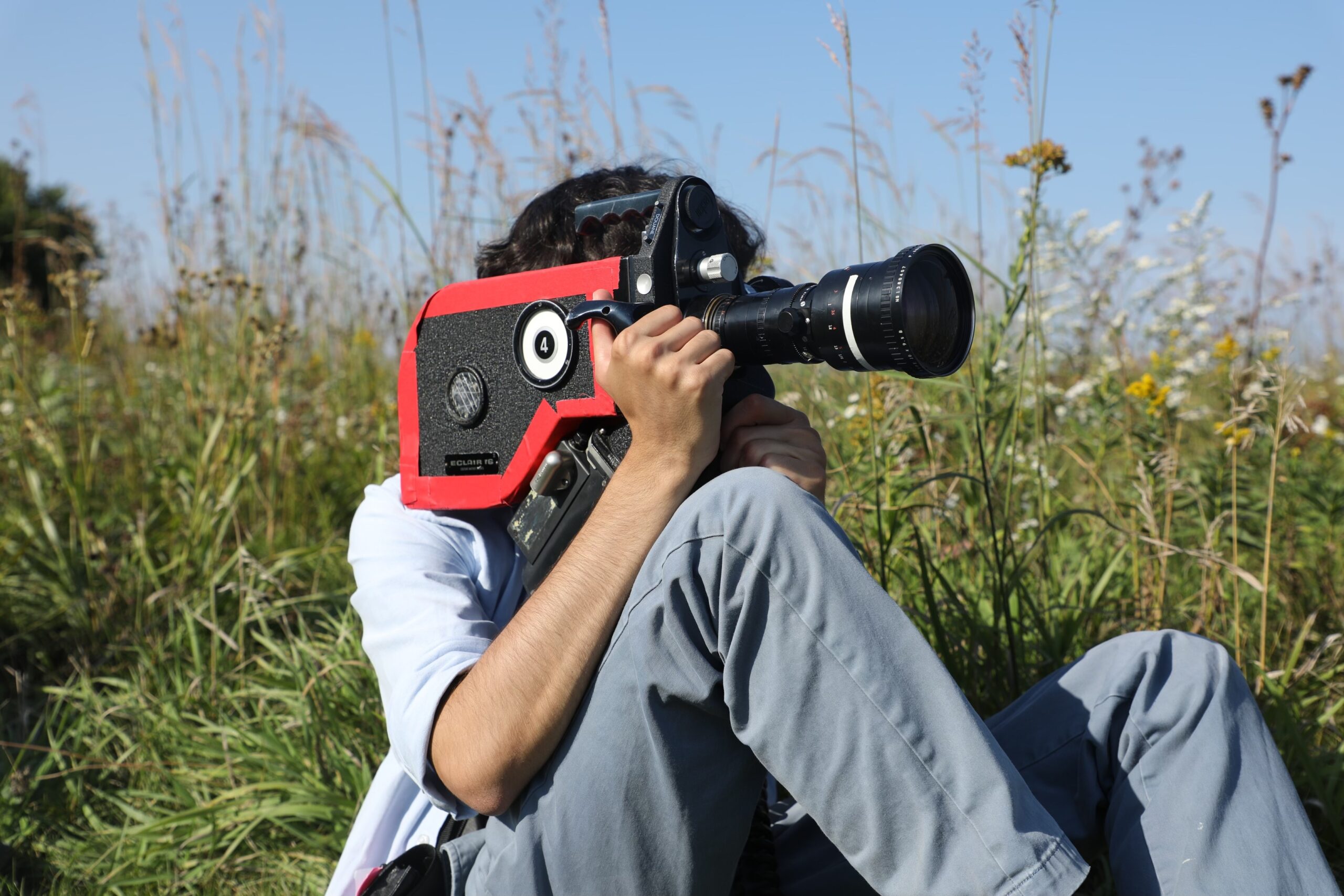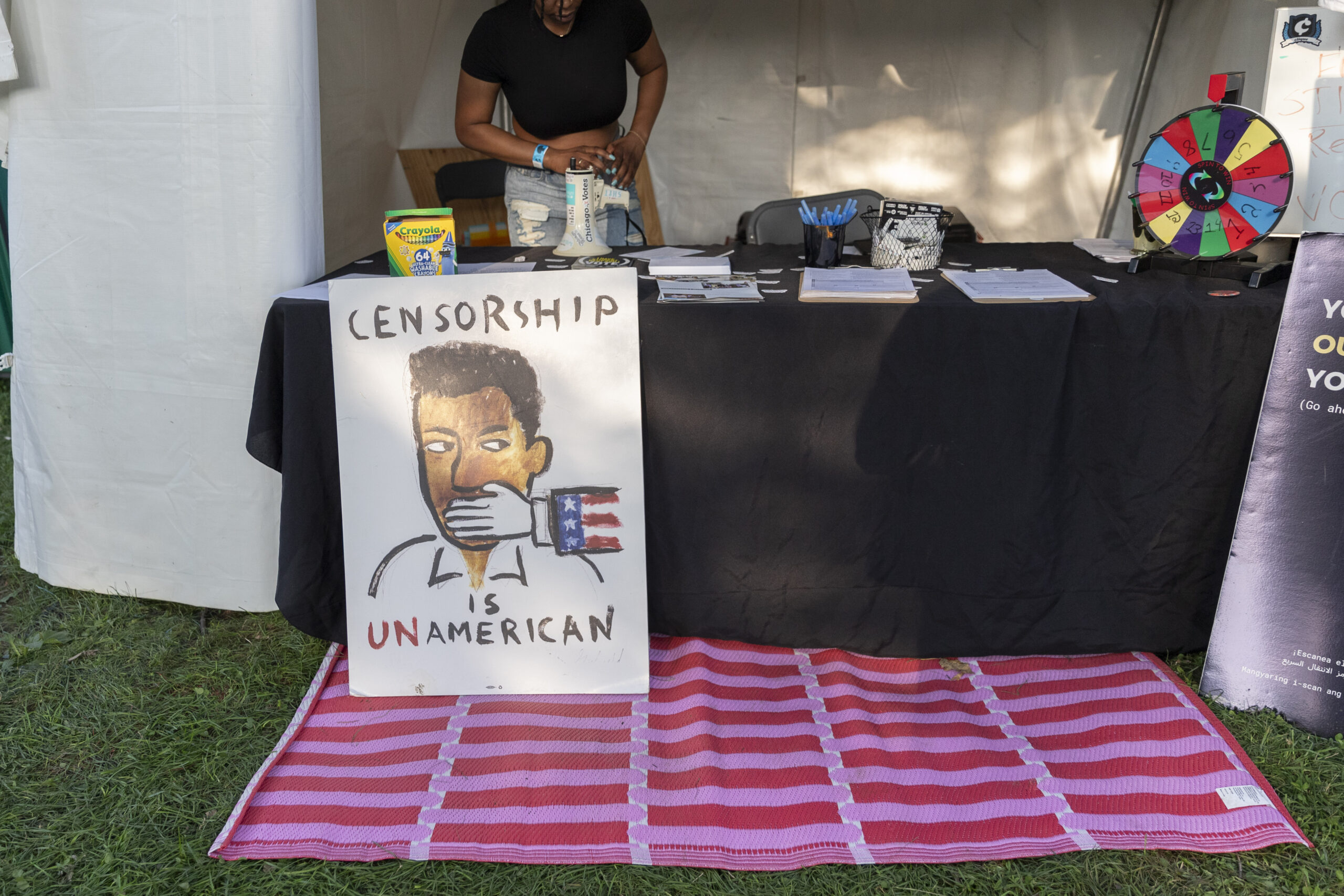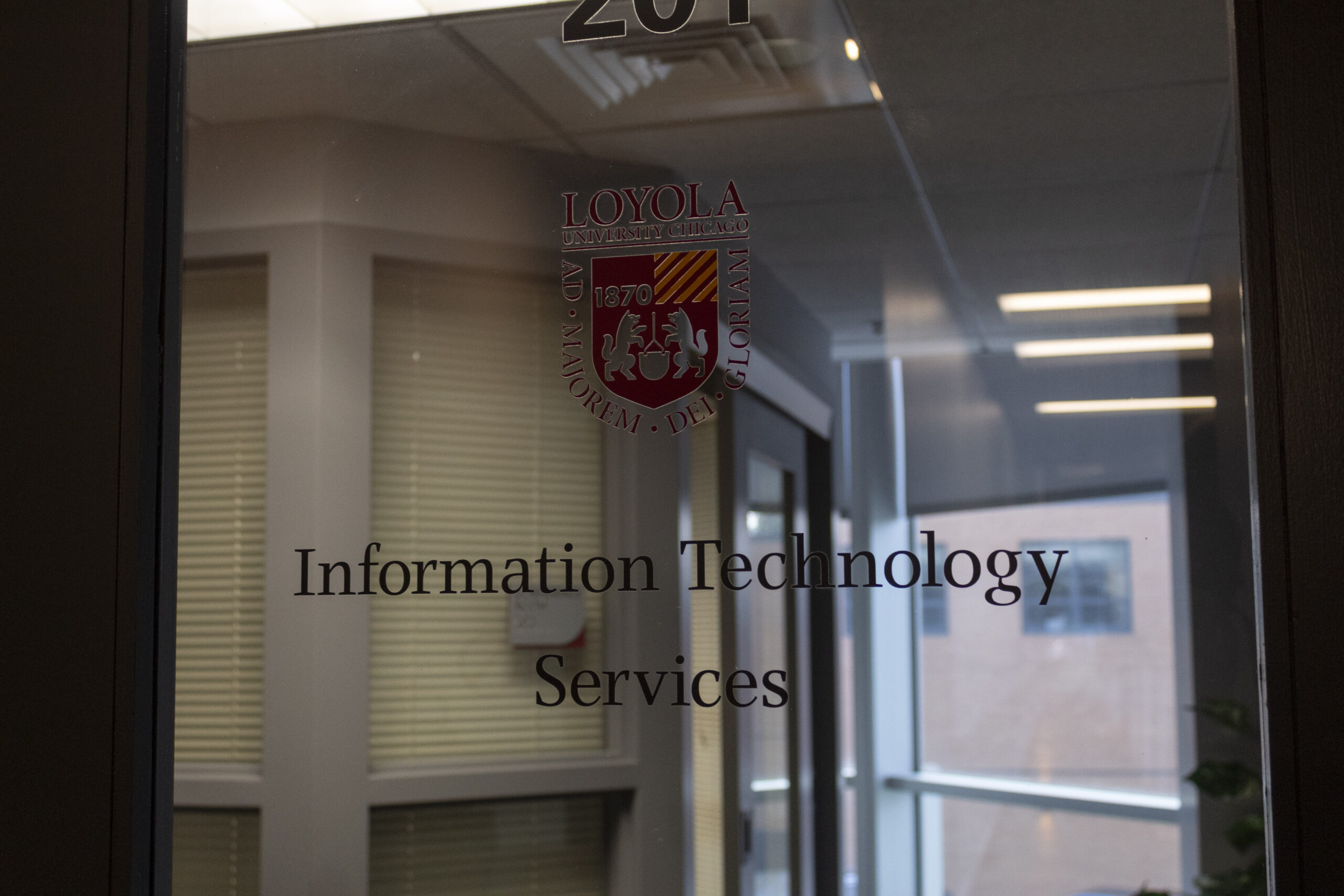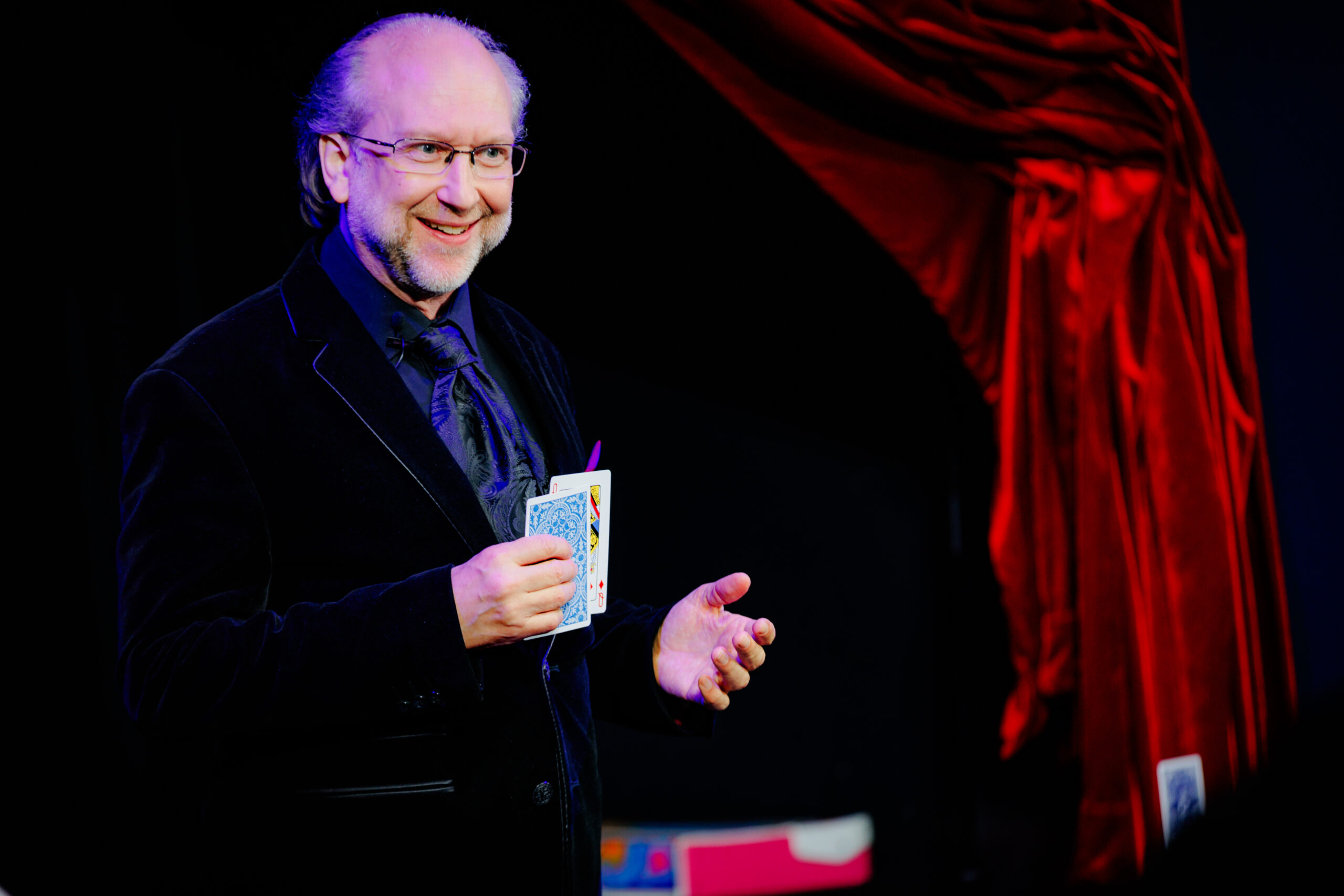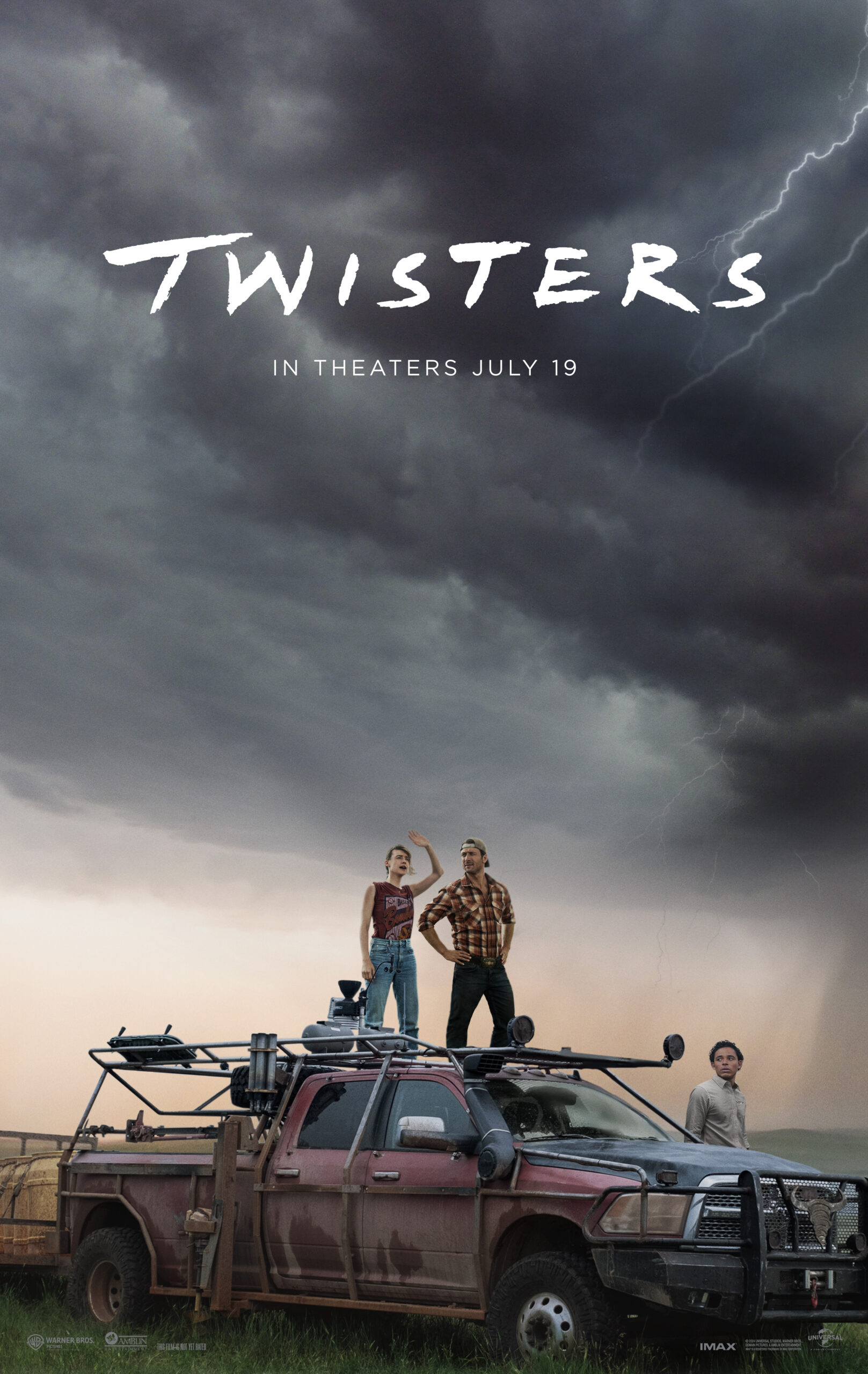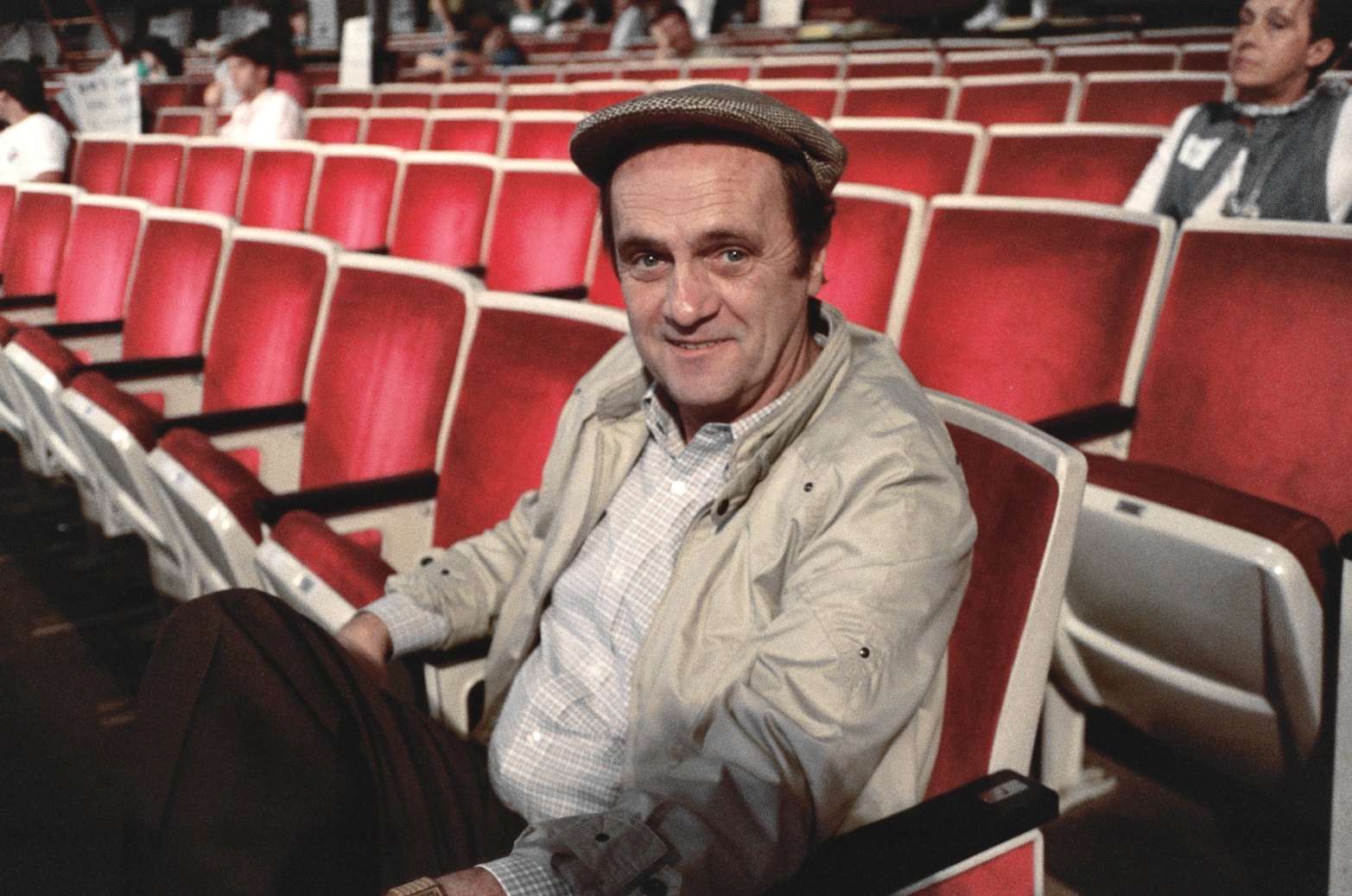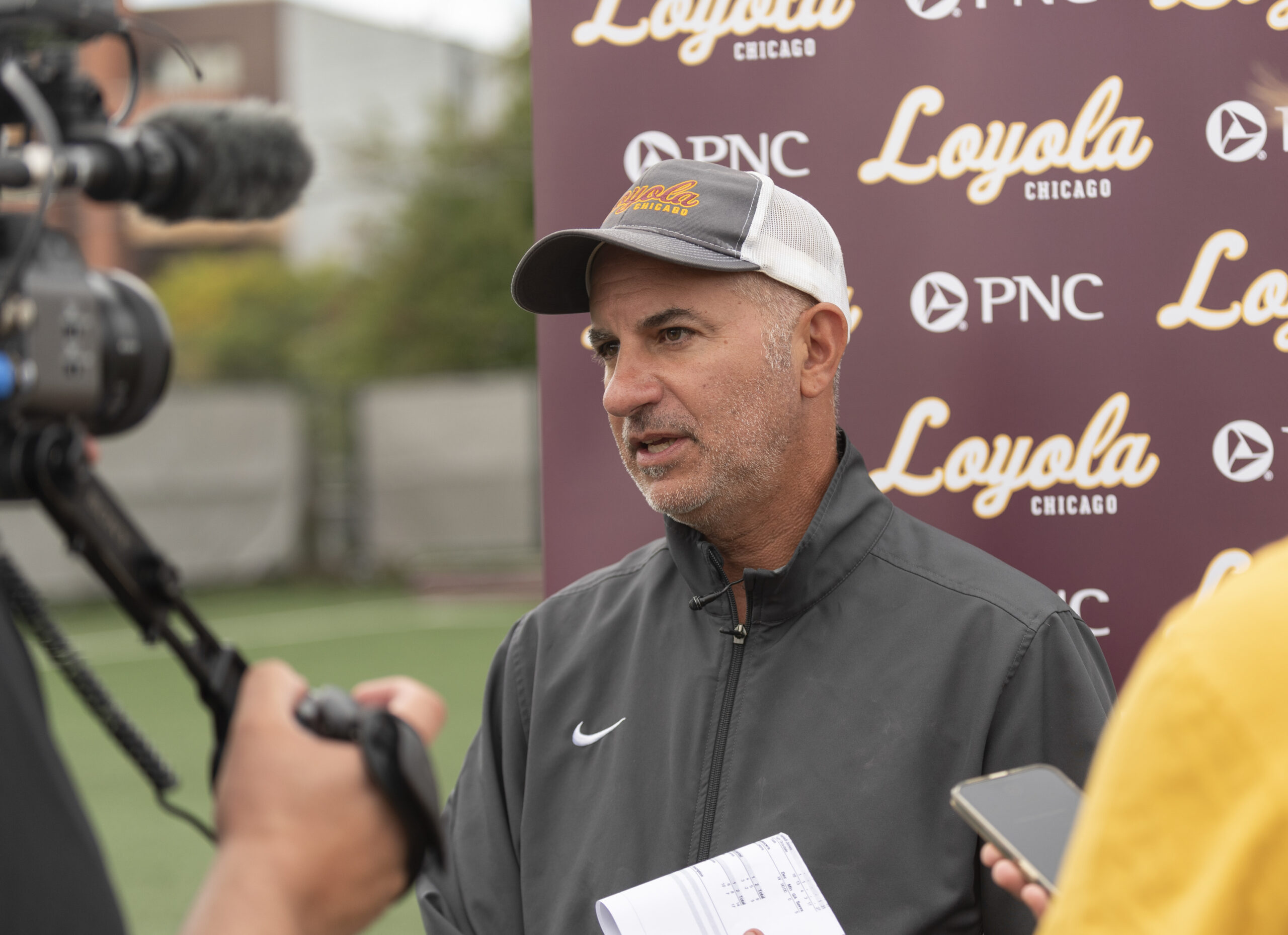Through a 1953 Eclair noiseless portable reflex camera, Michael Chopra grapples with the process of grieving.
Fake hospital diets are written on whiteboards, lighting angles are tweaked to perfection and scenes are rehearsed many times over. When it comes time to shoot, the set is silent. The crew holds their breath until director Michael Chopra calls, “Cut.”
Chopra, a fourth-year majoring in environmental science and film and digital media, is using a 1953 Eclair noiseless portable reflex camera to film a short film titled “Recollection.” He said the use of this camera is new to the Loyola film program.
The camera was revolutionary for its time, according to Cameras éclair. Its motor and shutter are on the same drive shaft, so no gears are needed between them, making the camera “intrinsically noiseless.” Chopra also said the camera includes a reflex viewfinder, which means the filmmaker can see what the lens is seeing.
Chopra is executing this project under the mentorship of Miguel Silveira — a screenwriter, director and assistant professor at Loyola’s School of Communication. Having shot with film in the past, Silveira has provided guidance to Chopra regarding technical features.
But, Silveira said, the student has since become the master.
“To be super frank, Michael knows the camera way more than I do at this point,” Silveira said. “There’s no question about it. At this point, I’ll go to him for assistance.”
“Recollection,” Chopra’s film, follows the story of Caroline, a nurse grappling with the recent death of her son amidst a recent promotion at work. She finds solace in the words of one of her young, terminally ill patients and, in the end, chooses life over death.
Chopra began writing the project in June and has been in the stages of production since late August. He said he found inspiration through his mom’s career as a nurse and his own experience as an activities assistant in an assisted living facility.
“I’m commenting on the work-life balance that nurses face,” Chopra said. “And I’m commenting on my thoughts about grief — the grieving process, life, death and rebirth.”
The film offers a societal critique on the lives of nurses, according to Chopra. It cuts between Caroline in the present and memories of her past — contrasting the liberty of the days with her son with the claustrophobic nature of the nursing facility.
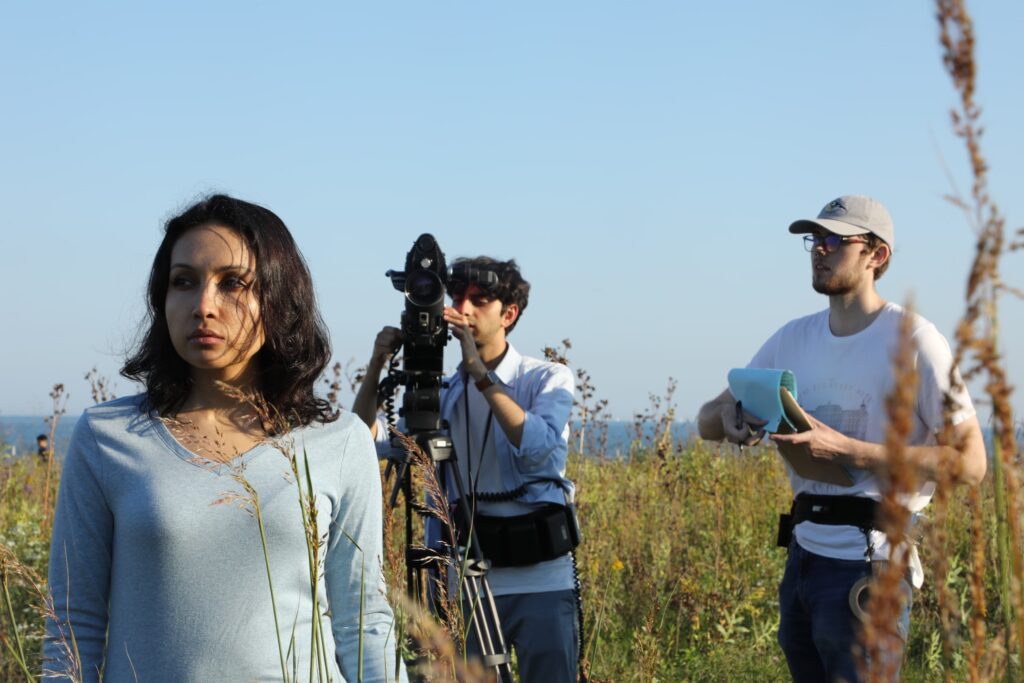
“I was inspired to create that dichotomy because I like to make films that comment on these more societal issues and daily life,” Chopra said.
For Chopra, “Recollection” represents a way to grow Loyola’s “vibrant” film community.
“We want to bring the Loyola film program to a new level,” Chopra said. “Where you can have a community of people who come together and make a film and challenge themselves academically, artistically and creatively.”
Silveira expressed a similar thought regarding the film community, as he said he hopes to see Loyola students inspired by Chopra’s work for further projects and film knowledge.
“Every student builds a base for the next students,” Silveira said. “What Michael is doing, specifically with film, is going to change what students at Loyola think of film. He takes all the credit for that.”
But the project has its difficulties. Using the film camera provides little grace when it comes to shooting and editing.
“What it entails is planning by the minute,” Chopra said. “Because, for budgetary reasons, too, we can only do one take for a shot. You can’t go back. It’s not like digital where you can keep shooting.”
Alex Powell, the student editor of “Recollection,” said he finds similar difficulties when it comes to the restricted shots of old film.
“Typical projects, for one shot, will have multiple takes, multiple different performances, so there’s more leeway into how you can sort of manipulate the film,” Powell said. “Because of how limited film is, it doesn’t allow the same sort of leeway.”
Silveira said his hope for Chopra is to reach a “high degree” of familiarity with and understanding of film as a media separate from digital.
“He understands that shooting film, to make a narrative film story, it’s a very different experience, even physically, than it is to make a film with digital,” Silveira said. “He inherits, from the experience, the physical memory of carrying the camera, positioning the camera and shooting a particular scene.”
For Chopra, the meticulous nature of film has pushed the crew to grow creatively and critically, as each shot requires many scene rehearsals beforehand. Along with filming the scene, a light meter is used to ensure the correct exposure of the image before shooting.
“Using film means you learn the process of being delicate with your shots and being very cognizant of what you’re putting on the image,” Chopra said.
Not only is the camera difficult to work with creatively, Silveira said, but physically as well.
“This particular Eclair, it’s very heavy, it breaks your back,” Silveira said. “So when you shoot certain kinds of projects, that project is not necessarily your best option. But it’s a very, very good option for you to develop your skills.”
But what the team shoots, they won’t see for about two weeks, Chopra said. The crew has to send their film to Cinelab, a lab in Massachusetts, where it’s developed and scanned to a 4K resolution image before being shipped back to Chicago. Powell then edits the final video scan using Adobe Premiere Pro.
However, this schedule of development is well worth the wait for Chopra.
“I remember sitting down to look through the viewfinder of the camera, and what the actor was doing in the setting, it matched exactly what I had on storyboards,” Chopra said. “And so just seeing that through the viewfinder, filming it and then two weeks later getting the footage back and seeing it come out exactly how I wanted it to come out, it was a really good experience.”
Powell had a similar experience when the team filmed at Montrose Point Bird Sanctuary.
“It was just a beautiful day outside,” Powell said. “And when we watched the footage for the first time, two weeks later, it was just so gorgeous. That space with the actors, it was just magical.”
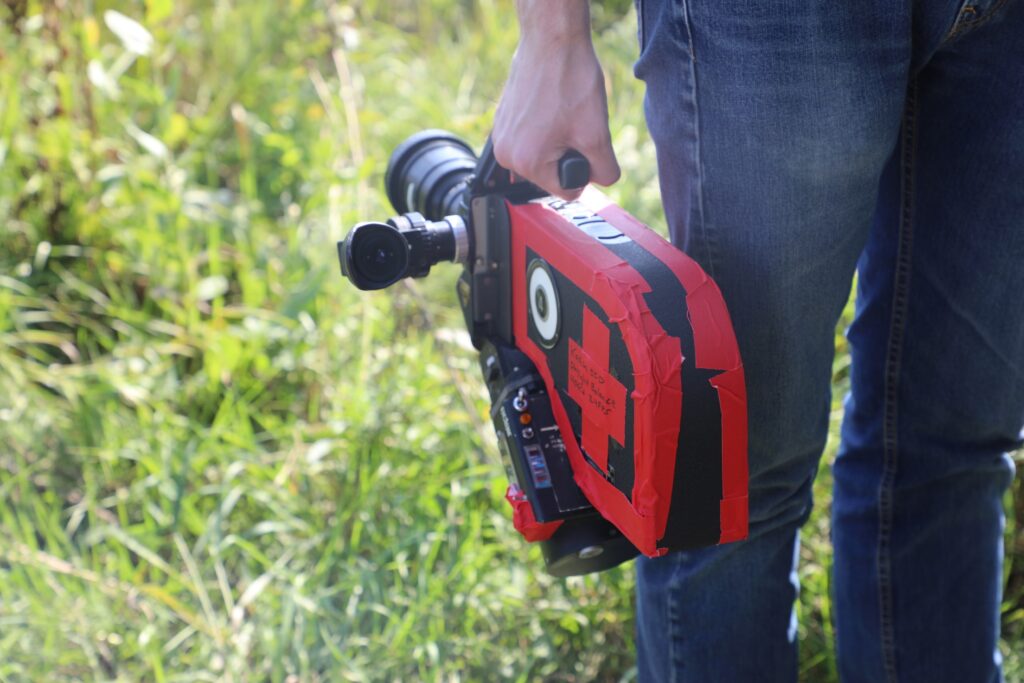
Clara Barton, a fourth-year majoring in environmental science, plays many parts from the sidelines of the project — from an extra nurse character to an ecological consultant on prairie plants. For her, the film’s most important aspect is the people behind it.
“I’m watching the people I love doing the things that they love to do,” Barton said. “And they’re all very passionate about what they’re doing.”
Mahtab Hejazi, who plays Caroline, shared similar sentiments about the dedication and warmth of the crew.
“Every time we are on set, we kind of try new things, different things,” Hejazi said. “Michael is very open to new ideas. I feel like that’s another part that I really like about this project.”
Because of the more mature nature of the film, Chopra wanted actors who were a bit older. Hejazi, a 31-year-old actress from the Chicago area, sent in an application after seeing Chopra’s casting call on Backstage. Chopra said he was “impressed” with her audition.
Hejazi’s role as Caroline is her first time working with Loyola, and she said she’s been enjoying it.
“I feel like the opportunity that is provided for the students as well as the outsiders is amazing to see,” Hejazi said. “I feel like everyone’s so welcoming, and I can’t wait to work with them again.”
For those interested in viewing “Recollection,” the Film and Digital Media program’s “Capstone, Practicum and Directing Short” screening will be happening in Damen Cinema on Dec. 9 from 2 to 4:30 p.m.
Featured image courtesy of Lily Kaya

